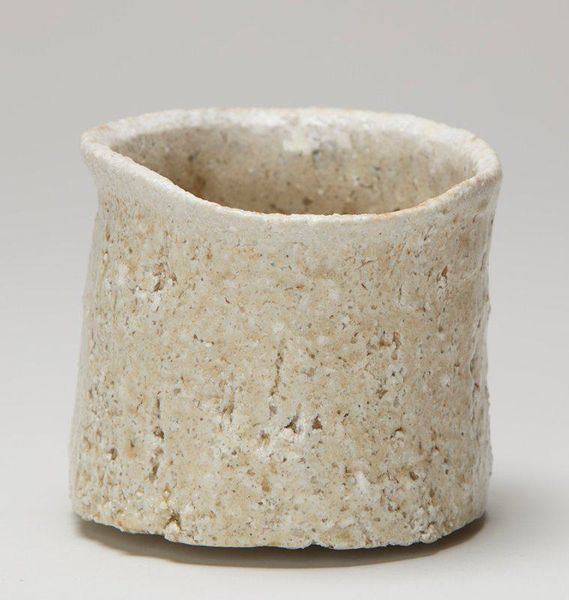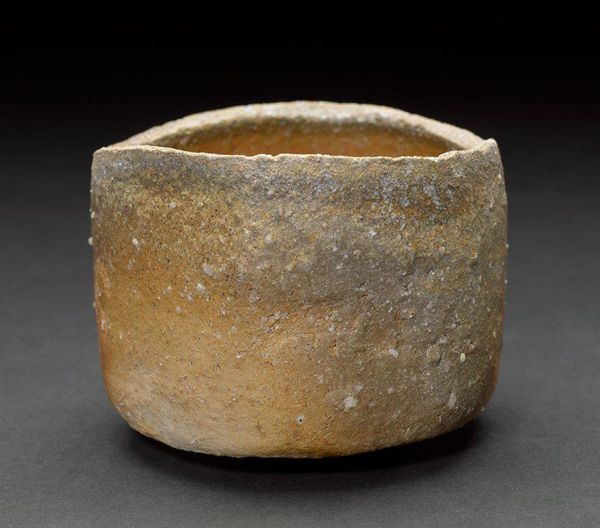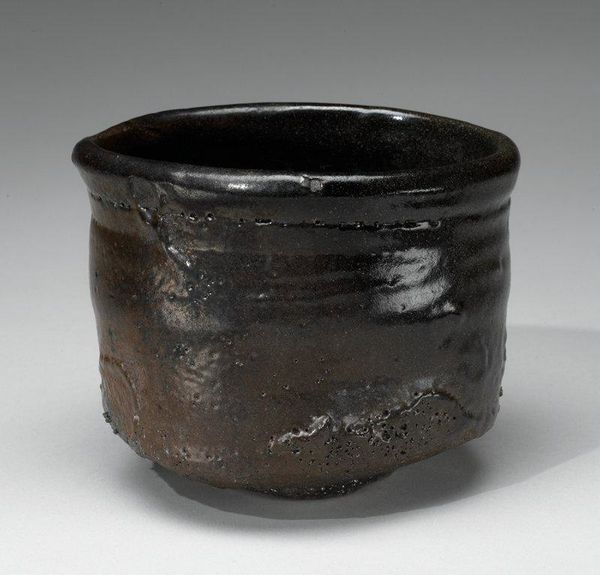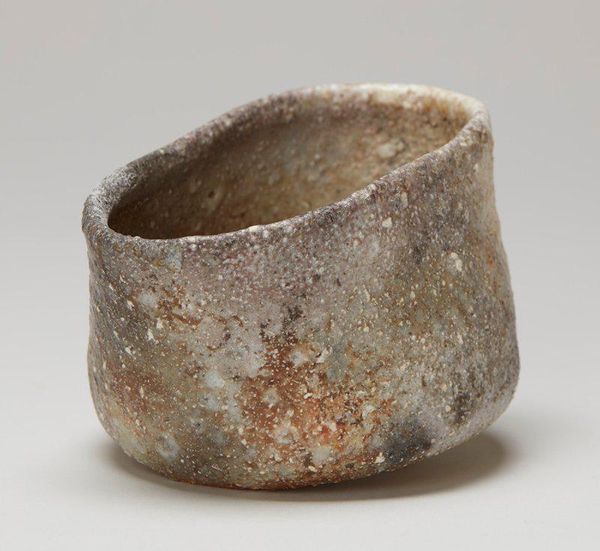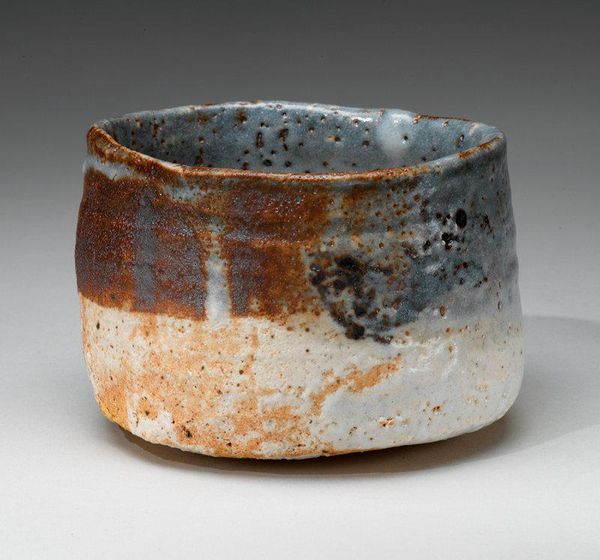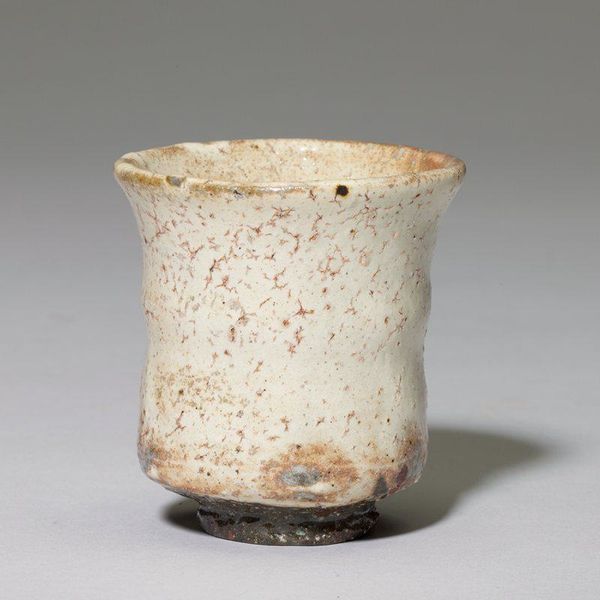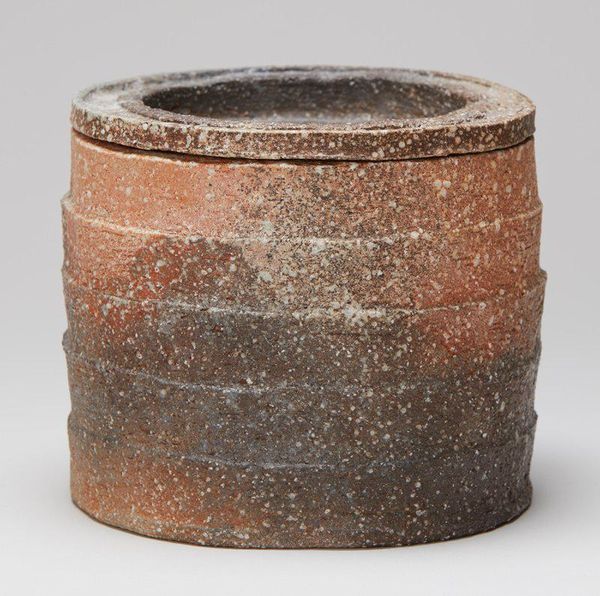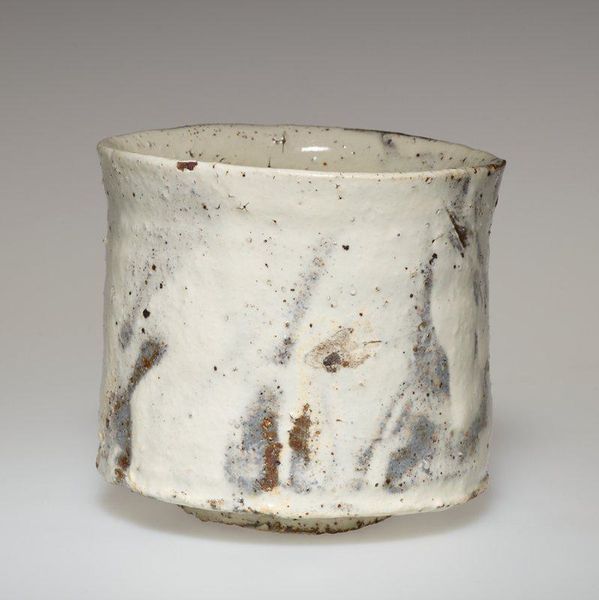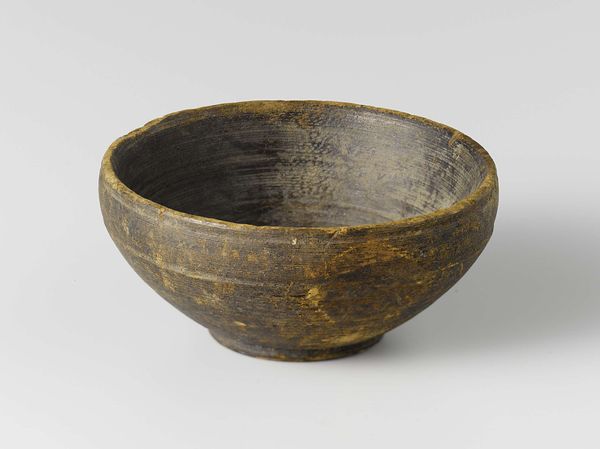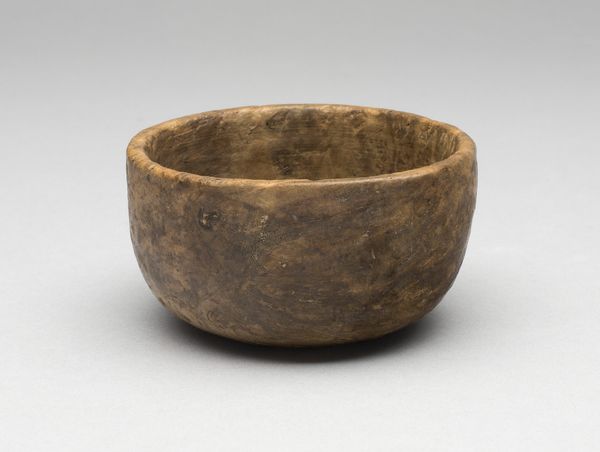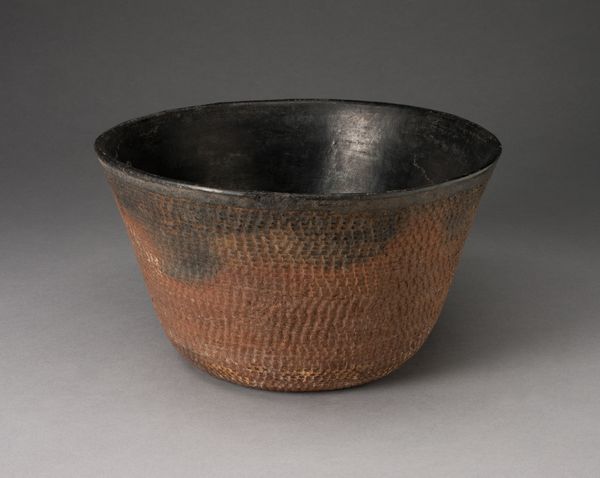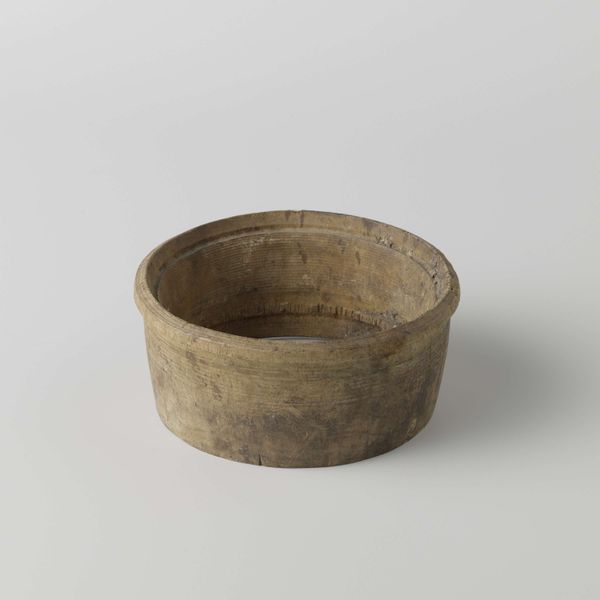
ceramic
#
asian-art
#
ceramic
#
ceramic
#
modernism
Dimensions: 2 7/8 x 5 1/2 x 5 1/16 in. (7.3 x 13.97 x 12.86 cm)
Copyright: No Known Copyright
Curator: Here at the Minneapolis Institute of Art, we have a striking piece titled "Tea bowl (chawan)," crafted around the 20th century by Tsujimura Shirō. What are your initial thoughts on it? Editor: It's beautifully rustic. The color palette is subdued, mostly earth tones. It has a tactile quality, as though you can feel the artist's hand shaping it. It certainly speaks of the Wabi-sabi aesthetic – embracing imperfection and simplicity. Curator: Precisely! Tea bowls, especially in the context of chanoyu – the Japanese tea ceremony – embody these principles. They reflect a profound connection to nature, but also to the social dimensions of equality that is the point of departure for the practice of tea. Shirō’s work fits within a lineage of ceramics that values the beauty in the irregularities and organic forms. Editor: It’s interesting how the lip of the bowl isn't perfectly symmetrical. Was this intentional or was it something borne of the kiln? Curator: Both! It's that marriage of intention and accident, isn’t it? We believe that Shirō lets the kiln "speak," giving it space to affect the final form and glaze, and this element connects strongly to the role that modern craft occupies in contemporary Japanese culture. It also points to the role craft objects had as alternatives to modern production, and more efficient social practices in Japan's transition to modernity. Editor: Visually, it achieves a wonderful balance. The porous surface creates a complex interplay of light and shadow, lending depth to an otherwise modest form. It really encapsulates the notion of finding beauty in simplicity. What stands out, too, is how powerfully the material asserts itself: here is Earth transformed by Fire. Curator: I agree; that raw, unpretentious quality really makes it. It pulls you in, asking us to contemplate its role within rituals of mindfulness and simplicity, connecting this quiet object to the broader discourse surrounding nature and its place in society. Editor: Reflecting on it now, the artist allowed the beauty inherent in both the process and the medium to dictate the final form, creating something both utilitarian and quietly profound. Curator: I'd say that it exemplifies how craft traditions can promote more egalitarian relations while providing potent tools to challenge modernity.
Comments
No comments
Be the first to comment and join the conversation on the ultimate creative platform.
